Higher versus lower sodium intake for preterm infants
- PMID: 37824273
- PMCID: PMC10569379
- DOI: 10.1002/14651858.CD012642.pub2
Higher versus lower sodium intake for preterm infants
Abstract
Background: Infants born preterm are at increased risk of early hypernatraemia (above-normal blood sodium levels) and late hyponatraemia (below-normal blood sodium levels). There are concerns that imbalances of sodium intake may impact neonatal morbidities, growth and developmental outcomes.
Objectives: To determine the effects of higher versus lower sodium supplementation in preterm infants.
Search methods: We searched CENTRAL in February 2023; and MEDLINE, Embase and trials registries in March and April 2022. We checked reference lists of included studies and systematic reviews where subject matter related to the intervention or population examined in this review. We compared early (< 7 days following birth), late (≥ 7 days following birth), and early and late sodium supplementation, separately.
Selection criteria: We included randomised, quasi-randomised or cluster-randomised controlled trials that compared nutritional supplementation that included higher versus lower sodium supplementation in parenteral or enteral intake, or both. Eligible participants were preterm infants born before 37 weeks' gestational age or with a birth weight less than 2500 grams, or both. We excluded studies that had prespecified differential water intakes between groups.
Data collection and analysis: Two review authors independently assessed eligibility and risk of bias, and extracted data. We used the GRADE approach to assess the certainty of evidence.
Main results: We included nine studies in total. However, we were unable to extract data from one study (20 infants); some studies contributed to more than one comparison. Eight studies (241 infants) were available for quantitative meta-analysis. Four studies (103 infants) compared early higher versus lower sodium intake, and four studies (138 infants) compared late higher versus lower sodium intake. Two studies (103 infants) compared intermediate sodium supplementation (≥ 3 mmol/kg/day to < 5 mmol/kg/day) versus no supplementation, and two studies (52 infants) compared higher sodium supplementation (≥ 5 mmol/kg/day) versus no supplementation. We assessed only two studies (63 infants) as low risk of bias. Early (less than seven days following birth) higher versus lower sodium intake Early higher versus lower sodium intake may not affect mortality (risk ratio (RR) 1.02, 95% confidence interval (CI) 0.38 to 2.72; I2 = 0%; 3 studies, 83 infants; low-certainty evidence). Neurodevelopmental follow-up was not reported. Early higher versus lower sodium intake may lead to a similar incidence of hyponatraemia < 130 mmol/L (RR 0.68, 95% CI 0.40 to 1.13; I2 = 0%; 3 studies, 83 infants; low-certainty evidence) but an increased incidence of hypernatraemia ≥ 150 mmol/L (RR 1.62, 95% CI 1.00 to 2.65; I2 = 0%; 4 studies, 103 infants; risk difference (RD) 0.17, 95% CI 0.01 to 0.34; number needed to treat for an additional harmful outcome 6, 95% CI 3 to 100; low-certainty evidence). Postnatal growth failure was not reported. The evidence is uncertain for an effect on necrotising enterocolitis (RR 4.60, 95% CI 0.23 to 90.84; 1 study, 46 infants; very low-certainty evidence). Chronic lung disease at 36 weeks was not reported. Late (seven days or more following birth) higher versus lower sodium intake Late higher versus lower sodium intake may not affect mortality (RR 0.13, 95% CI 0.01 to 2.20; 1 study, 49 infants; very low-certainty evidence). Neurodevelopmental follow-up was not reported. Late higher versus lower sodium intake may reduce the incidence of hyponatraemia < 130 mmol/L (RR 0.13, 95% CI 0.03 to 0.50; I2 = 0%; 2 studies, 69 infants; RD -0.42, 95% CI -0.59 to -0.24; number needed to treat for an additional beneficial outcome 2, 95% CI 2 to 4; low-certainty evidence). The evidence is uncertain for an effect on hypernatraemia ≥ 150 mmol/L (RR 7.88, 95% CI 0.43 to 144.81; I2 = 0%; 2 studies, 69 infants; very low-certainty evidence). A single small study reported that later higher versus lower sodium intake may reduce the incidence of postnatal growth failure (RR 0.25, 95% CI 0.09 to 0.69; 1 study; 29 infants; low-certainty evidence). The evidence is uncertain for an effect on necrotising enterocolitis (RR 0.07, 95% CI 0.00 to 1.25; 1 study, 49 infants; very low-certainty evidence) and chronic lung disease (RR 2.03, 95% CI 0.80 to 5.20; 1 study, 49 infants; very low-certainty evidence). Early and late (day 1 to 28 after birth) higher versus lower sodium intake for preterm infants Early and late higher versus lower sodium intake may not have an effect on hypernatraemia ≥ 150 mmol/L (RR 2.50, 95% CI 0.63 to 10.00; 1 study, 20 infants; very low-certainty evidence). No other outcomes were reported.
Authors' conclusions: Early (< 7 days following birth) higher sodium supplementation may result in an increased incidence of hypernatraemia and may result in a similar incidence of hyponatraemia compared to lower supplementation. We are uncertain if there are any effects on mortality or neonatal morbidity. Growth and longer-term development outcomes were largely unreported in trials of early sodium supplementation. Late (≥ 7 days following birth) higher sodium supplementation may reduce the incidence of hyponatraemia. We are uncertain if late higher intake affects the incidence of hypernatraemia compared to lower supplementation. Late higher sodium intake may reduce postnatal growth failure. We are uncertain if late higher sodium intake affects mortality, other neonatal morbidities or longer-term development. We are uncertain if early and late higher versus lower sodium supplementation affects outcomes.
Copyright © 2023 The Cochrane Collaboration. Published by John Wiley & Sons, Ltd.
Conflict of interest statement
David A Osborn is a Senior Editor for Cochrane Neonatal. However, he was not involved in editorial acceptance or review of this manuscript.
Natasha Diller does not have any interests to disclose at this time.
Pita Birch does not have any interests to disclose at this time.
Figures

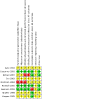
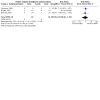
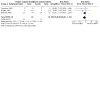
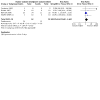
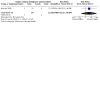
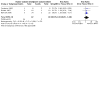

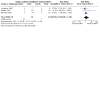
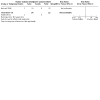
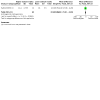
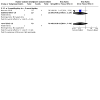
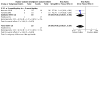
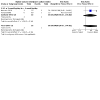

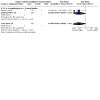
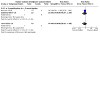
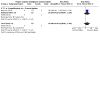
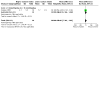


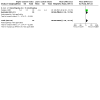
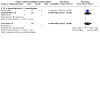

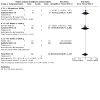

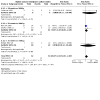






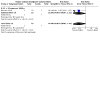

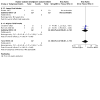
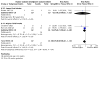
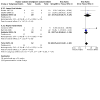
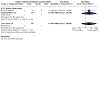
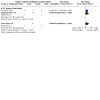
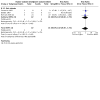
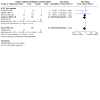
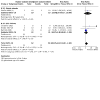
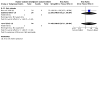
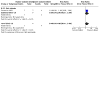


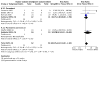
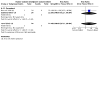

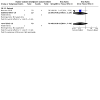
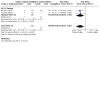

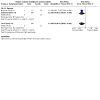
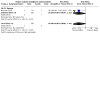
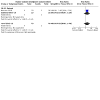
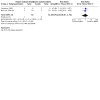
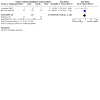

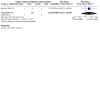

Update of
- doi: 10.1002/14651858.CD012642
References
References to studies included in this review
Ayisi 1992 {published data only}
-
- Ayisi RK, Mbiti MJ, Musoke RN, Orinda DA. Sodium supplementation in very low birth weight infants fed on their own mothers milk I: effects on sodium homeostasis. East African Medical Journal 1992;69(10):591-5. [PMID: ] - PubMed
-
- Mbiti MJ, Ayisi RK, Orinda DA. Sodium supplementation in very low birth weight infants fed on their own mothers milk: iI. effects on protein and bone metabolism. East African Medical Journal 1992;69(11):627-30. [PMID: ] - PubMed
Costarino 1992 {published data only}
-
- Costarino AT Jr, Gruskay JA, Corcoran L, Polin RA, Baumgart S. Sodium restriction versus daily maintenance replacement in very low birth weight premature neonates: a randomized, blind therapeutic trial. Journal of Pediatrics 1992;120(1):99-106. [DOI: 10.1016/s0022-3476(05)80611-0] [PMID: ] - DOI - PubMed
Ekblad 1987 {published data only}
Ertl 1982 {published data only}
-
- Ertl T, Sulyok E, Nemeth M, Tenyi I, Csaba IF, Varga F. The effect of sodium chloride supplementation on the postnatal development of plasma prostaglandin E and F2 alpha values in premature infants. Journal of Pediatrics 1982;101(5):761-3. [DOI: 10.1016/s0022-3476(82)80314-4] [PMID: ] - DOI - PubMed
Goldman 1962 {published data only}
-
- Goldman H, Karelitz S, Acs H, Seifter E. The effect of addition of sodium and potassium chloride to human milk in premature feeding. Annals of Diseases of Children 1961;102:615-6.
-
- Goldman HI, Karelitz S, Acs H, Seifter E. The relationship of the sodium, potassium, and chloride concentration of the feeding to the weight gain of premature infants. Pediatrics 1962;30:909-16. [PMID: ] - PubMed
Hartnoll 2000 {published data only}
-
- Hartnoll G, Betremieux P, Modi N. Randomised controlled trial of postnatal sodium supplementation on oxygen dependency and body weight in 25-30 week gestational age infants. Archives of Disease in Childhood. Fetal and Neonatal Edition 2000;82(1):F19-23. [DOI: 10.1136/fn.82.1.f19] [PMID: ] - DOI - PMC - PubMed
-
- Hartnoll G, Betremieux P, Modi ND. Randomised controlled trial of postnatal sodium supplementation in infants of 25-30 weeks gestational age: effects on cardiopulmonary adaptation. Archives of Disease in Childhood. Fetal and Neonatal Edition 2001;85(1):F29-32. [DOI: 10.1136/fn.85.1.f29] [PMID: ] - DOI - PMC - PubMed
-
- Modi N, Hartnoll G, Betremieux P. The effect of delayed sodium supplementation on weight gain and oxygen dependency in the preterm infant. Early Human Development 1998;52:268.
Isemann 2016 {published data only}
Shaffer 1989 {published data only}
References to studies excluded from this review
Al‐Dahhan 1983 {published data only}
Bhargava 1985 {published data only}
-
- Bhargava SK, Sachdev HP, Mohan M. Oral rehydration of low birth weight infants. Indian Pediatrics 1985;22(9):708-9. [PMID: ] - PubMed
Dathan 2022 {published data only}
-
- Dathan K, Sundaram M. Comparison of isotonic versus hypotonic intravenous fluid for maintenance fluid therapy in neonates more than or equal to 34 weeks of gestational age - a randomized clinical trial. Journal of Maternal-Fetal & Neonatal Medicine 2022;35(25):6338-45. [DOI: 10.1080/14767058.2021.1911998] [PMID: ] - DOI - PubMed
Hofman 1983 {published data only}
-
- Hofman A, Hazebroek A, Valkenburg HA. A randomized trial of sodium intake and blood pressure in newborn infants. JAMA 1983;250(3):370-3. [PMID: ] - PubMed
Lorenz 1982 {published data only}
Lucas 1988 {published data only}
Lynch 2008 {published data only}
Martinez‐Pantaleon 1988 {published data only}
-
- Martinez-Pantaleon O, Faure-Vilchis A, Gomez-Najera RI, Hernandez-Lopez M, Velasquez-Jones L. Comparative study of oral rehydration solutions containing either 90 or 60 millimoles of sodium per liter. Boletin Medico del Hospital Infantil de Mexico 1988;45(12):817-22. [PMID: ] - PubMed
Mendicini 1971 {published data only}
-
- Bucci G, Mendicini M, Scalamandre A, Annibaldi L, Savignoni PG, Nodari S. A controlled trial on therapy for newborns weighing 750-1 250 g. II. Blood chemistry and electrocardiographic observations in the newborn period. Acta Paediatrica Scandinavica 1971;60(4):417-27. [DOI: 10.1111/j.1651-2227.1971.tb06680.x] [PMID: ] - DOI - PubMed
-
- Mendicini M, Scalamandre A, Savignoni PG, Picece-Bucci S, Esuperanzi R, Bucci G. A controlled trial on therapy for newborns weighing 750-1250g. I. Clinical findings and mortality in the newborn period. Acta Paediatrica Scandinavica 1971;60(4):407-16. [DOI: 10.1111/j.1651-2227.1971.tb06679.x] [PMID: ] - DOI - PubMed
Oca 2003 {published data only}
Prekajski 1998 {published data only}
-
- Prekajski NB, Ljujić M, Dudić S, Ranković M. Sodium balance in premature infants. Srpski Arhiv za Celokupno Lekarstvo 1998;126(1-2):6-12. [PMID: ] - PubMed
Roy 1976 {published data only}
-
- Day GM, Radde IC, Balfe JW, Chance GW. Electrolyte abnormalities in very low birth weight (VLBW) infants. In: Pediatric Research. Vol. 10. 1976:522. - PubMed
Stonestreet 1983 {published data only}
Yeo 2000 {published data only}
-
- Yeo CL, Chan D, Ho LY, Tan PL. Effectiveness of normal saline in the management of hypotension in very low birth weight infants. Singapore Paediatric Journal 2000;42:175-9.
References to studies awaiting assessment
Sanchez 2023 {published data only}
-
- Sanchez C, Castillo D, Valdes BD, Castaneda F. Effect of high sodium intake (5 mEq/kg/day) in preterm newborns. Indian Pediatrics 2023;60(1):146-8. - PubMed
References to ongoing studies
CTRI/2019/08/020617 {published data only}
-
- CTRI/2019/08/020617. Effect of early sodium supplementation in postnatal weight gain of preterm babies. https://trialsearchwhoint/Trial2aspx?TrialID=CTRI/2019/08/020617.
NCT03889197 {published data only}
-
- NCT03889197. Physiologic approach to sodium supplementation in premature infants. https://clinicaltrialsgov/show/nct03889197 2019.
NCT04035564 {published data only}
-
- NCT04035564. Early sodium intake in preterm newborns. clinicaltrials.gov/ct2/show/NCT04035564 (first received 29 July 2019). [CENTRAL: CN-01965880]
Additional references
Agostoni 2010
-
- Agostoni C, Buonocore G, Carnielli VP, De Curtis M, Darmaun D, Decsi T, et al, ESPGHAN Committee on Nutrition. Enteral nutrient supply for preterm infants: commentary from the European Society of Paediatric Gastroenterology, Hepatology and Nutrition Committee on Nutrition. Journal of Pediatric Gastroenterology and Nutrition 2010;50(1):85-91. [DOI: 10.1097/MPG.0b013e3181adaee0] [PMID: ] - DOI - PubMed
Agren 1998
Aperia 1981
Balasubramanian 2012
-
- Balasubramanian K, Kumar P, Saini SS, Attri SV, Dutta S. Isotonic versus hypotonic fluid supplementation in term neonates with severe hyperbilirubinemia - a double-blind, randomized, controlled trial. Acta Paediatrica 2012;101(3):236-41. [DOI: 10.1111/j.1651-2227.2011.02508.x] [PMID: ] - DOI - PubMed
Baraton 2009
Bauer 1989
Bauer 1991
-
- Bauer K, Bovermann G, Roithmaier A, Gotz M, Proiss A, Versmold HT. Body composition, nutrition, and fluid balance during the first two weeks of life in preterm neonates weighing less than 1500 grams. Journal of Pediatrics 1991;118(4 Pt 1):615-20. [DOI: 10.1016/s0022-3476(05)83390-6] [PMID: ] - DOI - PubMed
Bauer 1993
Bell 2014
Bischoff 2016
Bolat 2013
Bolisetty 2014
Bolisetty 2015
-
- Bolisetty S, Legge N, Bajuk B, Lui K, New South Wales and the Australian Capital Territory Neonatal Intensive Care Units' Data Collection. Preterm infant outcomes in New South Wales and the Australian Capital Territory. Journal of Paediatrics and Child Health 2015;51(7):713-21. [DOI: 10.1111/jpc.12848] [PMID: ] - DOI - PubMed
Covidence [Computer program]
-
- Covidence. Version accessed 12 March 2022. Melbourne, Australia: Veritas Health Innovation. Available at covidence.org.
Day 1976
Deeks 2022
-
- Deeks JJ, Higgins JP, Altman DG, editor(s). Chapter 10: Analysing data and undertaking meta-analyses. In: Higgins JP, Thomas J, Chandler J, Cumpston M, Li T, Page MJ, Welch VA editor(s). Cochrane Handbook for Systematic Reviews of Interventions Version 6.3 (updated February 2022). Cochrane, 2022. Available from www.training.cochrane.org/handbook.
EndNote 2013 [Computer program]
-
- EndNote. Version EndNote 20. Philadelphia, PA: Clarivate, 2013. Obtainable from: https://endnote.com/.
Ertl 2001
Gawlowski 2006
GRADEpro GDT [Computer program]
-
- GRADEpro GDT. Version accessed 24 April 2017. Hamilton (ON): GRADE Working Group, McMaster University, 2014.
Harkavy 1983
-
- Harkavy KL, Scanlon JW. Hypernatremia in the very low birthweight infant. International Journal of Pediatric Nephrology 1983;4(2):75-8. [PMID: ] - PubMed
Higgins 2003
Higgins 2017
-
- Higgins JP, Altman DG, Sterne JA, editor(s). Chapter 8: Assessing risk of bias in included studies. In: Higgins JP, Churchill R, Chandler J, Cumpston MS, editor(s). Cochrane Handbook for Systematic Reviews of Interventions Version 5.2.0 (updated June 2017). Cochrane, 2017. Available from training.cochrane.org/handbook/archive/v5.2..
Higgins 2022a
-
- Higgins JP, Li T, Deeks JJ editor(s). Chapter 6: Choosing effect measures and computing estimates of effect. In: Higgins JP, Thomas J, Chandler J, Cumpston M, Li T, Page MJ, Welch VA editor(s). Cochrane Handbook for Systematic Reviews of Interventions Version 6.3 (updated February 2022). Cochrane, 2022. Available from www.training.cochrane.org/handbook.
Higgins 2022b
-
- Higgins JP, Eldridge S, Li T, editor(s). Chapter 23: Including variants on randomized trials. In: Higgins JP, Thomas J, Chandler J, Cumpston M, Li T, Page MJ, Welch VA editor(s). Cochrane Handbook for Systematic Reviews of Interventions Version 6.3 (updated February 2022). Cochrane, 2022. Available from www.training.cochrane.org/handbook.
Inder 2003
International Committee 2005
Jobe 2001
Jochum 2018
-
- Jochum F, Moltu SJ, Senterre T, Nomayo A, Goulet O, Iacobelli S, ESPGHAN/ESPEN/ESPR/CSPEN working group on pediatric parenteral nutrition. ESPGHAN/ESPEN/ESPR/CSPEN guidelines on pediatric parenteral nutrition: fluid and electrolytes. Clinical Nutrition 2018;37(6 Pt B):2344-53. [DOI: 10.1016/j.clnu.2018.06.948] [PMID: ] - DOI - PubMed
Jones 1976
Kim 2015
Kloiber 1996
Koletzko 2005
-
- Koletzko B, Goulet O, Hunt J, Krohn K, Shamir R, Parenteral Nutrition Guidelines Working Group, European Society for Clinical Nutrition and Metabolism, European Society of Paediatric Gastroenterology, Hepatology and Nutrition (ESPGHAN), European Society of Paediatric Research (ESPR). Guidelines on Paediatric Parenteral Nutrition of the European Society of Paediatric Gastroenterology, Hepatology and Nutrition (ESPGHAN) and the European Society for Clinical Nutrition and Metabolism (ESPEN), Supported by the European Society of Paediatric Research (ESPR). Journal of Pediatric Gastroenterology and Nutrition 2005;41 Suppl 2:S1-87. [DOI: 10.1097/01.mpg.0000181841.07090.f4] [PMID: ] - DOI - PubMed
Lee 2015
Li 2007
-
- Li YF, Lu GJ, Han YK. Risk factors for intracranial hemorrhage in very low birth weight infants. Zhongguo Dang Dai Er Ke za Zhi [Chinese Journal of Contemporary Pediatrics] 2007;9(4):297-300. [PMID: ] - PubMed
Lim 2011
Lorenz 1995
-
- Lorenz JM, Kleinman LI, Ahmed G, Markarian K. Phases of fluid and electrolyte homeostasis in the extremely low birth weight infant. Pediatrics 1995;96(3 Pt 1):484-9. [PMID: ] - PubMed
Mannan 2012
-
- Mannan MA, Shahidulla M, Salam F, Alam MS, Hossain MA, Hossain M. Postnatal development of renal function in preterm and term neonates. Mymensingh Medical Journal : MMJ 2012;21(1):103-8. [PMID: ] - PubMed
Maurer 1984
-
- Maurer A, Micheli JL, Schutz Y, Freymond D, Jequier E. Transepidermal water loss and resting energy expenditure in preterm infants. Helvetica Paediatrica Acta 1984;39(5-6):405-18. [PMID: ] - PubMed
Moritz 2009
Murphy 1997
Neu 2011
Ofek Shlomai 2014
Oh 2012
Papile 1978
Rees 1984
Review Manager 2020 [Computer program]
-
- Review Manager 5 (RevMan 5). Version 5.4. Copenhagen: The Cochrane Collaboration, 2020.
RevMan Web 2023 [Computer program]
-
- Review Manager Web (RevMan Web). Version 5.8. The Cochrane Collaboration, 2023. Available at revman.cochrane.org.
Ross 1977
Schünemann 2013
-
- Schünemann H, Brożek J, Guyatt G, Oxman A, editor(s). Handbook for grading the quality of evidence and the strength of recommendations using the GRADE approach (updated October 2013). GRADE Working Group, 2013. Available from https://gdt.gradepro.org/app/handbook/handbook.html.
Shennan 1988
-
- Shennan AT, Dunn MS, Ohlsson A, Lennox K, Hoskins EM. Abnormal pulmonary outcomes in preterm infants: prediction from oxygen requirement in the neonatal period. Pediatrics 1988;82(4):527-32. [PMID: ] - PubMed
Skelton 1994
Stoltz Sjostrom 2013
Takahashi 1994
Tammela 1992
Wilkins 1992a
Publication types
MeSH terms
Substances
LinkOut - more resources
Full Text Sources
Medical
Miscellaneous

